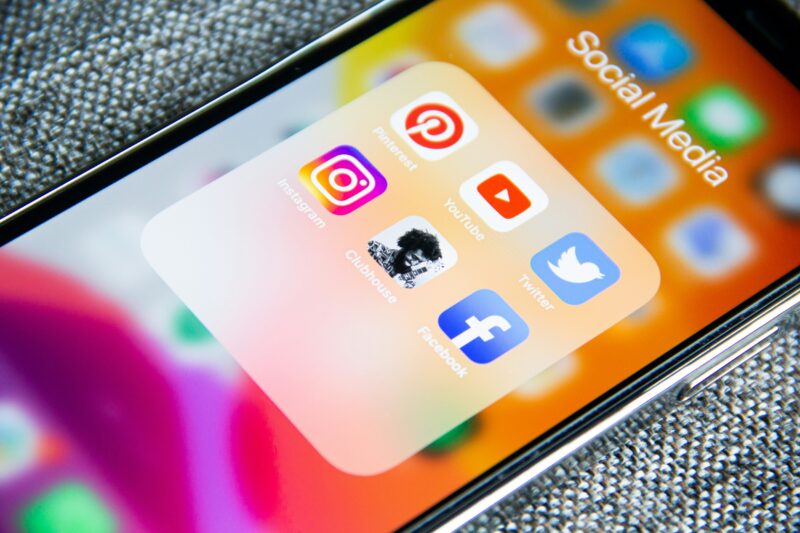
If you’re like most people, scrolling through social media is part of your everyday life. In fact, 70% of U.S. adults use some type of social media, spending a little over two hours on these sites each day.
But while platforms like Facebook, Instagram, and TikTok offer opportunities for entertainment and social connection, they can also have a negative impact on mental health.
Keep reading to learn more about the complex relationship between social media and mental well-being, and discover practical strategies for creating a healthier digital lifestyle and fostering positive online experiences.
The Relationship Between Social Media and Mental Health
The downsides to excessive social media use are well documented: increased anxiety, depression, loneliness, and fear of missing out (FOMO). Counting likes and comments can leave you with a sense of dissatisfaction, compelling you to keep checking your feed in hope of better luck down the line. Staring at a screen can also keep you from making and maintaining real-life connections, leading to feelings of social isolation.
But social media isn’t all bad. Sharing photos and milestones can help you stay connected with far-off friends. Online communities offer a way to find people with similar interests and struggles, which can foster a sense of belonging. Social media can also be a good place to find and share funny and uplifting content, which can help reduce stress and brighten your day.
6 Tips to Create a Healthier Digital Lifestyle
Social media is a complicated part of our lives, and it’s probably here to stay. So how can you foster positive online experiences that support your mental health goals? Try these strategies:
1. Consider your motivation
Why do you log in to social media? Is it out of boredom, loneliness, or habit? Instead of mindless scrolling, be intentional with your social media use. Maybe you want to share some new photos, send birthday greetings, or check up on a friend who’s having a hard time. Try taking those specific actions and then logging off once you complete them. Being an active participant on social media enables you to engage with people you care about instead of anonymously following the interactions of others, which can lead to feelings of isolation.
2. Set time limits
Along those lines, consider how much time you spend on social media each day, and set appropriate limits. A recent study revealed that limiting social media use to about 30 minutes a day can decrease loneliness and depression. If that sounds like an impossible goal, start with a limit that works for you right now. Set screen time limits on your apps, and disable notifications so you’re not tempted to check in all day long.
3. Curate your digital environment
Carefully review the accounts you follow. Does your blood pressure rise every time your uncle posts about politics? Does looking at a friend’s steady stream of vacation photos leave you feeling dissatisfied with your own four walls? Mute or unfollow those accounts, and stick to real-world interactions with those people. Remember, you are under no obligation to maintain digital connections with everyone you know. Instead, focus on filling your feed with accounts that encourage you, inspire you, or make you laugh.
4. Establish device-free zones
Many of us mindlessly pick up our phones the moment we’re unoccupied. To combat that digital devotion, designate device-free zones in your home, such as the bedroom, bathroom, and kitchen table. Whether you’re sleeping, eating, reading, or chatting with your family, make the most of those tech-free spaces. Enjoy the presence of the people around you, or just the peaceful sound of silence.
5. Practice gratitude
If spending time on social media leaves you feeling disenchanted with your life, stop for a reality check. Many people post their best moments and memories, not the tough stuff. So don’t make the mistake of comparing your inner struggles with someone else’s highlight reel. Instead, keep an ongoing list of all the good things in your life, and remind yourself of those blessings whenever you’re feeling low. The best way to counter disappointment is with gratitude.
6. Be the change
If online negativity has you feeling down, but you still want to engage, be the change you want to see on social media. Rather than airing out your own frustrations, try to maintain a positive online presence. Post the kinds of things you’d like to see on others’ accounts. By setting an example of kindness and positivity, you can brighten up your little corner of the internet.
By taking a mindful, balanced approach to social media use, you can create a healthier digital lifestyle that supports your mental well-being.
If you’re dealing with mental health issues exacerbated by excessive social media use, call Beachside Rehab at 866-349-1770 to speak with our trained admissions counselors. Our mental health treatment center can provide the support you need to set aside distractions, build healthy boundaries, and find the path to healing.
Photo by Adem AY on Unsplash
Sources:
- https://www.pewresearch.org/internet/fact-sheet/social-media/
- https://www.statista.com/statistics/433871/daily-social-media-usage-worldwide/
- https://guilfordjournals.com/doi/abs/10.1521/jscp.2018.37.10.751?journalCode=jscp
